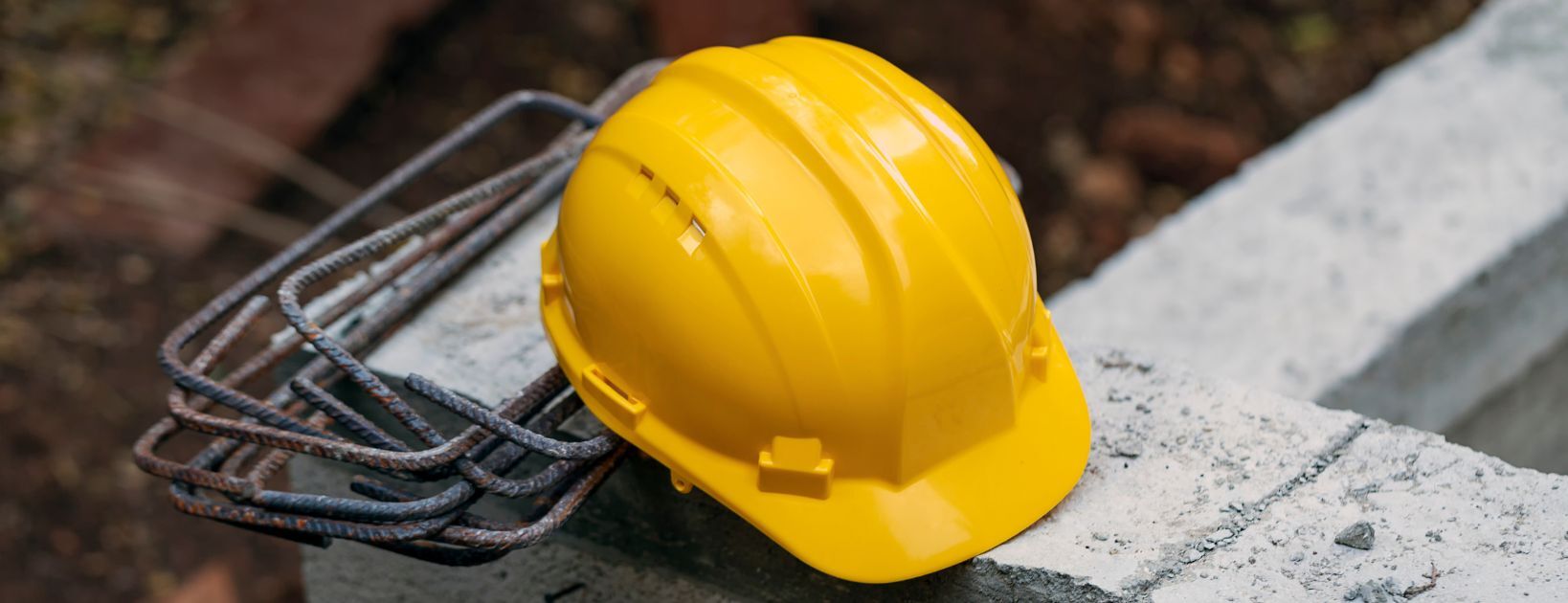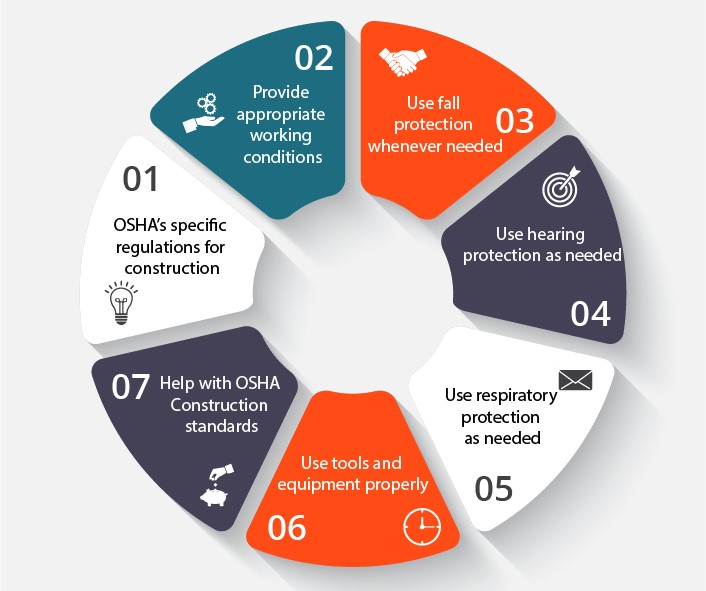Blog Center
Explore the latest stories and insights!

OSHA Standards for Construction: A Guide to Stay Safe on the Job
Date: 2022/09/07
OSHA | 4.21 MIN READ
Construction sites are inherently hazardous, with falling objects, moving machinery, and heavy loads all potential threats to workers. Workers in this field are exposed to a different set of dangers than most other industries. And similarly, OSHA standards for construction and general industry are not the same.
This article includes the following:
➔ OSHA’s specific regulations for construction
➔ Provide appropriate working conditions
➔ Use fall protection whenever needed
➔ Use hearing protection as needed
➔ Use respiratory protection as needed
➔ Use tools and equipment properly
➔ Help with OSHA Construction standards

OSHA’s specific regulations for construction
OSHA standards for construction are designed to keep workers safe on the job site by setting guidelines for things such as noise levels, personal protective equipment (PPE) usage, and cleanliness of the space. These standards are not just suggestions or tips, they are legally-binding regulations that one must follow if he operates in a construction company. OSHA compliance is the responsibility of each employer. While it might seem like an overwhelming list of requirements at first glance, many of these standards are common sense principles that anyone would want their employees to follow anyway. Let’s have a look at OSHA construction standards and see how employees can stay safe on the job.
Provide appropriate working conditions
Construction workers have a right to safe working conditions. This means employers must take steps to protect their workers, including providing adequate training, safe equipment and tools and, of course, safe work sites. OSHA has also created standards for how workers should work. For example, workers cannot be in untethered free-fall more than 6 feet. This means workers must have proper fall protection, such as a safety harness, when working above 6 feet. OSHA also has special rules for workers who are minors and/or who are pregnant. For example, minors must have a 30-hour work week and a maximum 8-hour workday. Also, pregnant workers must be provided a reasonable break every 4 hours.
Use fall protection whenever needed
Falls are a major cause of injury in construction and all workers must be protected from falls. All workers must use proper fall protection when they are 10 feet above the ground or higher. You must wear fall protection if you are: - Working on roofs, scaffolds, and other elevated surfaces - roofers, framers, and utility workers must use fall protection when they’re working on roofs, scaffolding, or other elevated surfaces. This includes workers who are installing, repairing, or removing roofing materials, shingles or other materials on the roof.
- Working in trenches - construction workers who are digging trenches must use fall protection when they are 10 feet deep or above ground level. This includes workers who are excavating, grading, trenching, or digging.
- Working on ladders - if you are using a ladder as an approved means of fall protection, the ladder must be at least 24 feet long. Also, make sure the ladder is steady and properly secured.
- Working from a bucket or other elevated equipment - if you are using an approved bucket or other type of equipment that safely lifts you off the ground, make sure it is properly secured and has a safety device that holds the bucket or equipment. The equipment must be attached to a properly installed and maintained personnel hoist.

Use hearing protection as needed
Hearing loss is another major risk in construction, with nearly 3/4 of workers at risk for hearing loss. This can also lead to other health issues. All workers must use hearing protection if they are exposed to noise levels above 80 decibels. You must wear hearing protection if you are:
- Operating noisy equipment - workers who are operating noisy equipment must wear hearing protection. This includes jackhammers, bulldozers, cranes, power shovels, and other equipment.
- Working in noisy areas - workers who are in noisy areas must also wear hearing protection. This includes workers who are working near cranes, pile drivers, pile-driving operations, and other activities that create noise.
- Using tools that create noise - certain tools, such as chainsaws, grinders, power hammers, pneumatic tools, and riveting guns, create noise that can damage your hearing. Make sure to use hearing protection when using any of these tools.
Use respiratory protection as needed
Construction workers face many dangerous fumes and vapors on the job. These fumes and vapors can cause health problems, such as respiratory illnesses, including asthma, emphysema, and lung cancer. All workers must use respiratory protection if they are exposed to certain harmful fumes or vapors on the job. You must wear respiratory protection if you are:
- Operating jackhammers - Workers who are operating jackhammers must wear respiratory protection when working in areas that have concentrations of contaminants that exceed OSHA standards.
- Operating power shovels - Workers who are operating power shovels must wear respiratory protection when working in areas that have concentrations of contaminants that exceed OSHA standards.
- Working in areas where silica is present - Construction workers who are working in areas where silica is present (for example, sanding, cutting, grinding, or removing materials that contain silica) must wear respiratory protection.
Use tools and equipment properly
Using tools and equipment improperly is not only risky, but also a strict violation of OSHA standards. Make sure to use tools and equipment appropriately to prevent accidents. If you are operating cranes, loaders, excavators, or other large equipment, make sure to use the equipment properly. This includes making sure the operator’s manual is available, the equipment is maintained and the equipment is used according to its capacity. If you are operating cranes, it is mandatory to check whether the equipment has a tag showing it is properly certified and maintained. Be aware of working conditions and weather, and make sure to inspect the equipment before using it to make sure there are no defects. Also, in all cases double check the equipment does not exceed its defined capacity because it can lead to numerous troubles.
Need help with OSHA construction standards?
Construction workers face unique challenges on the job. This is why OSHA has created standards that are different for construction workers than for most other industries. But it can be hard to deal with all these alone because the safety standards are constantly changing. This is when compliance advisers come to help. With Smart Training you can have a complete OSHA written program, compliance checklists and job hazard analysis. And with Platinum+ package you will have your own compliance advisor and a yearly compliance inspection.
Subscribe to Our Blog
You may also like